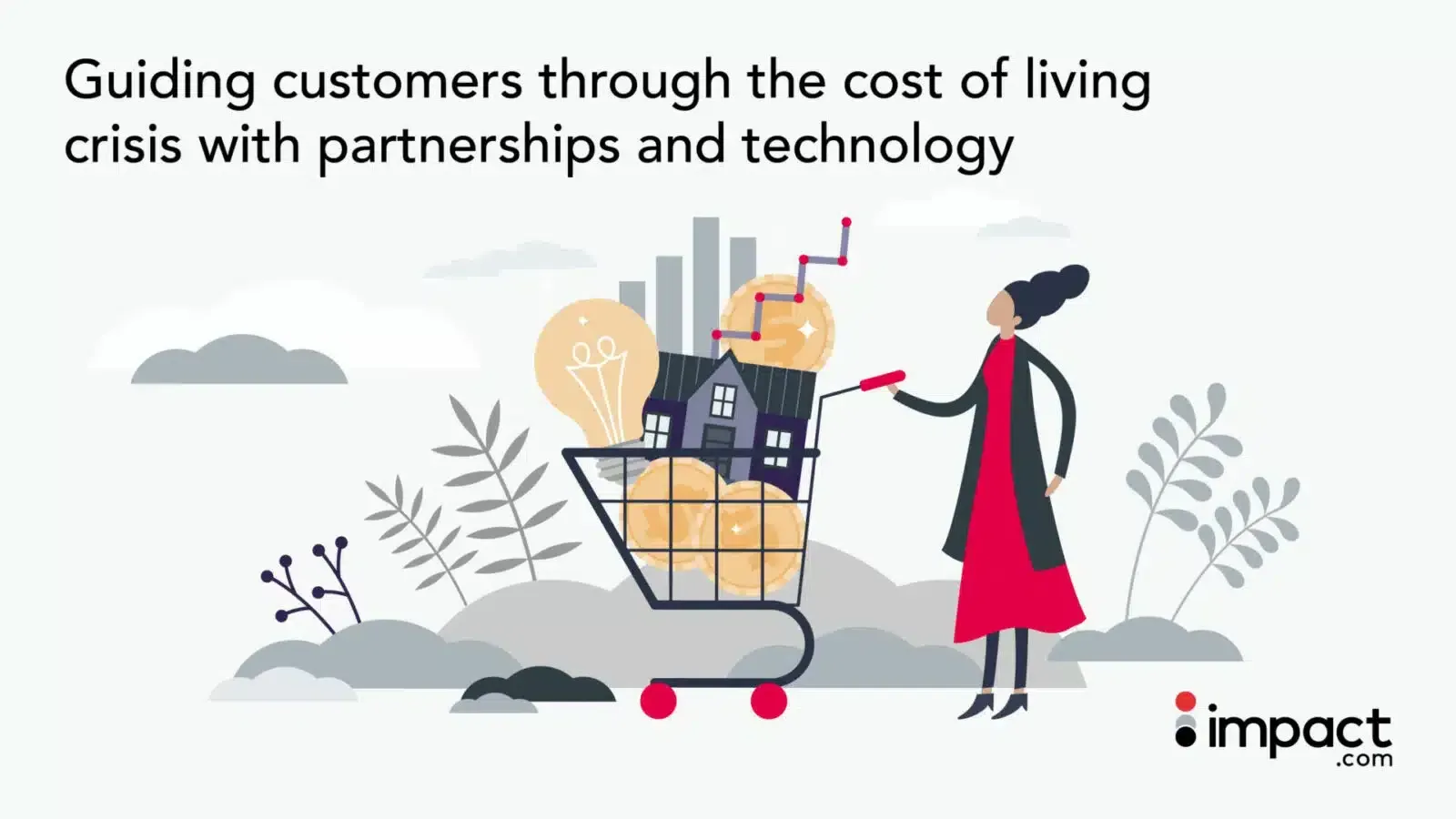GUIDING CUSTOMERS THROUGH THE COST OF LIVING CRISIS WITH PARTNERSHIPS AND TECHNOLOGY

Consumers have been feeling a tight squeeze on their spending power over the past couple of years. In November 2021, 62% of UK households reported a cost of living increase in the previous month – a figure that rose to an undeniable 91% in July 2022.
As a result of these squeezes, forecasts from the Office of Budget Responsibility suggest real household disposable income will fall by 2.2% in the 2022/23 financial year, meaning consumers will tighten their belts further and be less likely to spend.
In a previous article on Black Friday 2022 Trends, we saw customers shifting away from “panic scrolling and impulse buying”, and instead embracing the idea that good value doesn’t just mean “low cost”. These trends are still present now thanks to this decline in disposable income.
So what does all this mean for brand marketers? In essence, they’ll need to make their budgets work yet more effectively in reaching customers who are hesitant to spend. Here are just three trends we’re seeing in 2023:
1. Adopting A Tech-Backed Omnichannel Approach To Inspire Loyalty
Throughout the customer journey, customers expect to be able to interact with a brand on various platforms and use different methods of communication. When those channels are siloed off, the experience immediately breaks down and the customer suffers frustration and confusion.
Using an omnichannel approach, on the other hand, has a positive impact on customer loyalty. This includes integrating content creators and other partnerships with additional online and offline marketing channels.
What are some of the ways brands can improve customer loyalty using omnichannel strategies? One is seamless web and mobile integration with offline tracking. Using strategies like card link offers, QR code tracking and cashback, brands can offer unique rewards for using an agreed payment provider at the point of sale.
An example of this is Airtime Rewards partnering with mobile phone providers and retailers to reduce mobile bill payments after making purchases with them. To further its omnichannel strategy, Airtime partnered with TikTok influencer @gelikanu to promote its #RaceToRewards campaign challenge in London, resulting in an impressive uplift in engagement.
2. Using Data To Inform Partner Strategy
Another trend we’re seeing is brands leveraging the wealth of partnership data available today. It’s clear consumer behaviour habits are changing to reflect the economic situation, and more and more brands are starting to track these changes using in-depth reporting and analytics.
Different types of partnerships will garner different results, and some will also work together in a more complementary way than others, but all will have an incremental impact on engagement. As such, brands should look at all their partner data holistically to be able to make more informed decisions about their various partnerships going forward.
For example, a closer look at the data might reveal that upper-funnel partners are consistently adding value and traffic to the program, despite not always being credited for the last-click.
Meanwhile, while some partnerships are invaluable for raising brand awareness, the brand may also want to highlight or introduce other schemes such as cashback – via their partners – to help convert this traffic into sales.
It’s these data-driven decisions about affiliate partnerships that not only drive profitability, but also enable a brand to serve its customers more effectively.
3. Joining Forces To Reward Customer Loyalty
We’re also seeing new partnership opportunities emerging among complementary brands, i.e. brands with similar audiences, especially in the loyalty and customer retention space. By joining forces in this way, retailers are able to reward existing customers for their loyalty through special offers and discounts with partnering brands.
4. Driving Efficiency Through Automation
The final trend we’re seeing from brands keen to help get their own business through the downturn is a focus on internal efficiency through automation.
To stay afloat during economic uncertainty, it can be tempting to cut staff and other internal operations. However, another approach is to use automation to cut out manual tasks and help free up teams to work efficiently on more profitable tasks or projects.
In the case of managing partnerships, this could include automating publisher outreach as much as possible – for instance, auto-assigning tasks or using customised email templates and mail merge systems – as well as engaging with existing partners to optimise communication flows and project/campaign management.
Brands can further optimise affiliate programmes by using an all-in-one platform to manage all of their brand partnerships in one place, which can also help automate everyday tasks such as contracting, payouts and engagement reminders.
Each of these trends embraces the idea that customers today aren’t buying a product or service based on monetary value alone. Consumers value brand interaction, or at the very least, are interested in how brands are catering to their specific needs, through good times and bad.
By James Bennie, Regional Vice President, Customer Success, impact.com
Also published in:
Mordern Retail



